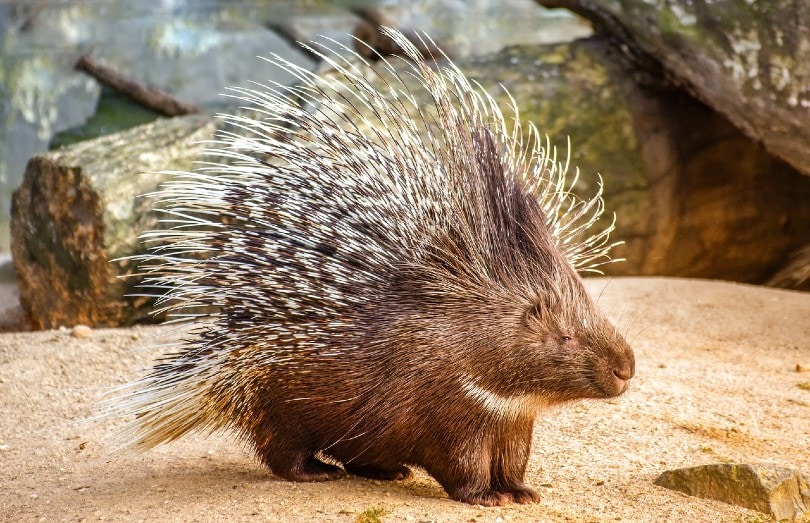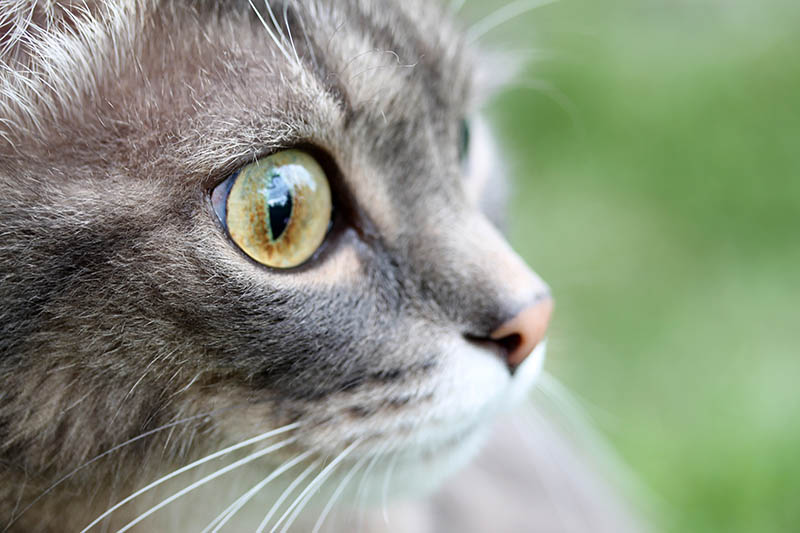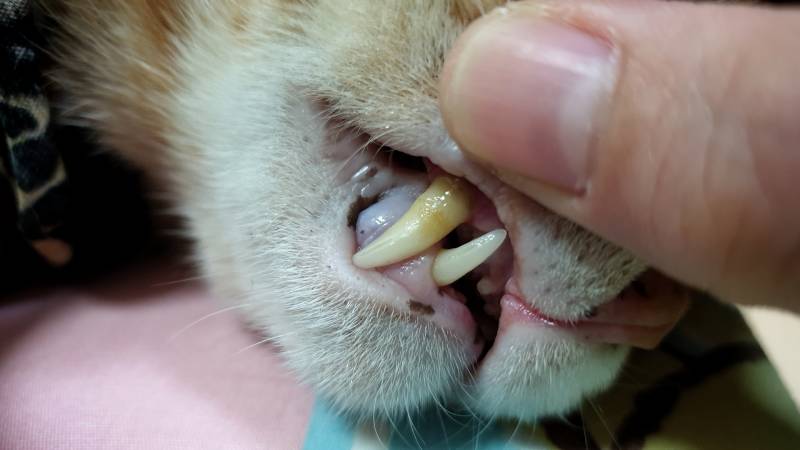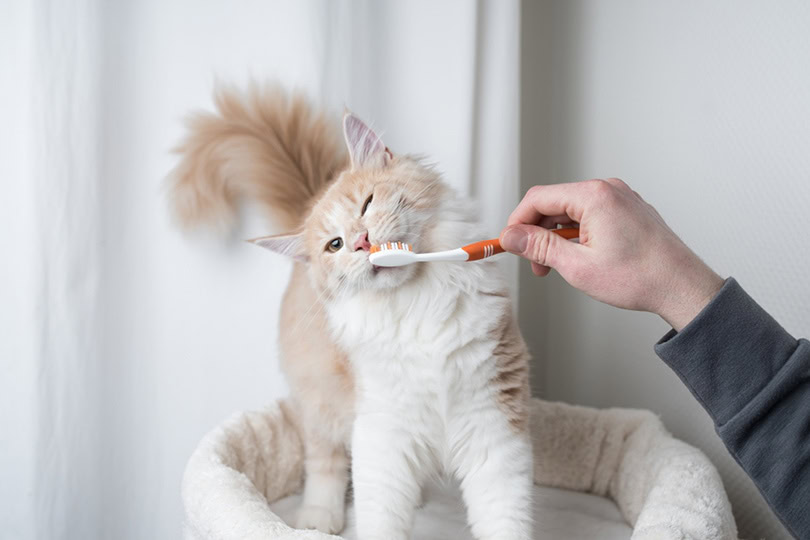VET APPROVED

The information is current and up-to-date in accordance with the latest veterinarian research.
Learn more »Click to Skip Ahead
Porcupines might have a reputation for being a bit prickly, but that doesn’t mean they don’t make great pets. There are several serious ethical considerations to be mindful of before adopting a porcupine, and as such, they’re not a good pet for most people.
We have plenty of information for you to consider in this article, which we hope will help you make an informed choice if you’re thinking about adopting one.

About Porcupines
The term porcupine is used to describe several large rodents, known for their quills, which protect them from predators. Porcupines are often categorized into two taxonomic groups: the family Hystricidae (Old World Porcupines) and Erethizontidae (New World Porcupines). Despite both groups possessing quills on their backs, they are in fact not closely related to each other.
Old World Porcupines (Hystricidae)
These porcupines are found in parts of Europe, Africa, and Asia. Perhaps the most popular porcupine in this family is the crested porcupine (Hystrix cristata), which also happens to be one of the largest rodents in the world. These porcupines are nocturnal, herbivorous, and terrestrial (land-dwellers).
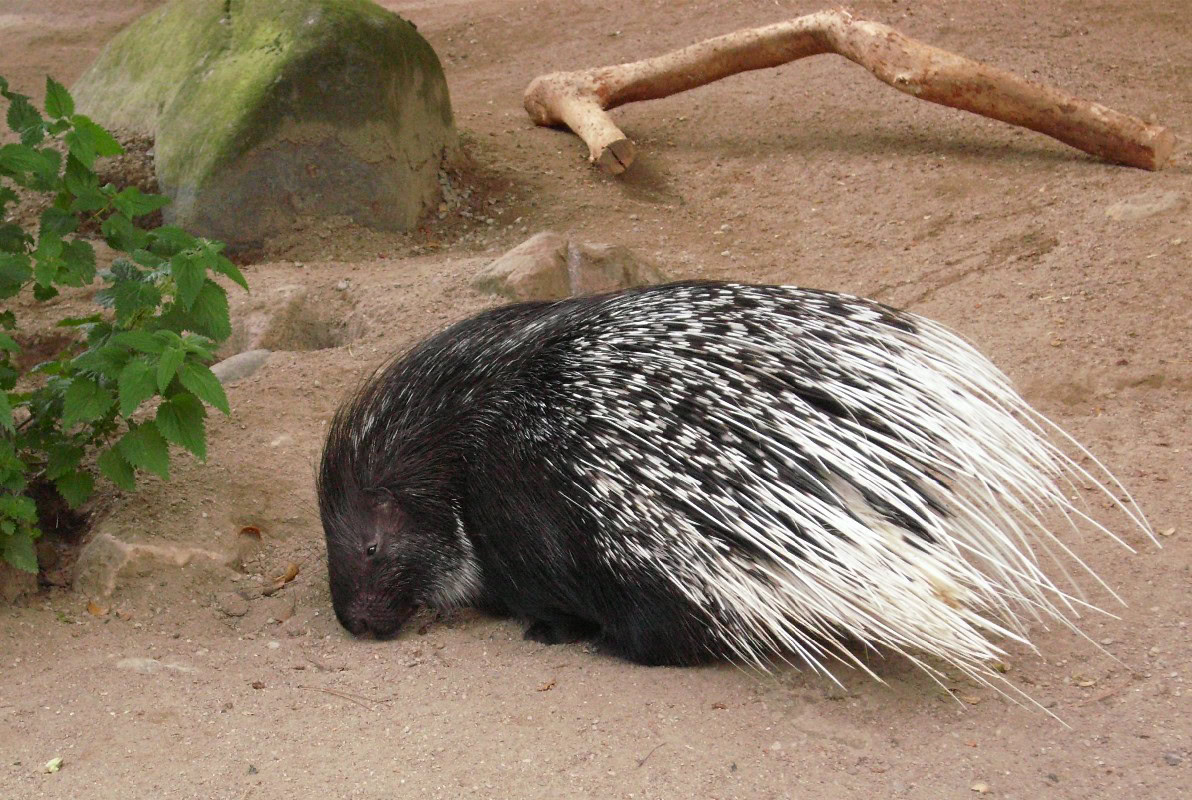
New World Porcupines (Erethizontidae)
These porcupines are found in the continents of North America and the northern regions of South America. Unlike the old world porcupines, they are arboreal (tree-climbers). The most popular porcupine in this family is the North American porcupine (Erethizon dorsatum), known for possessing not just quills but also a strong odor to warn away predators, which they can increase when they feel threatened. Though the second largest rodent in North America, they are dwarfed by the crested porcupine in terms of size.
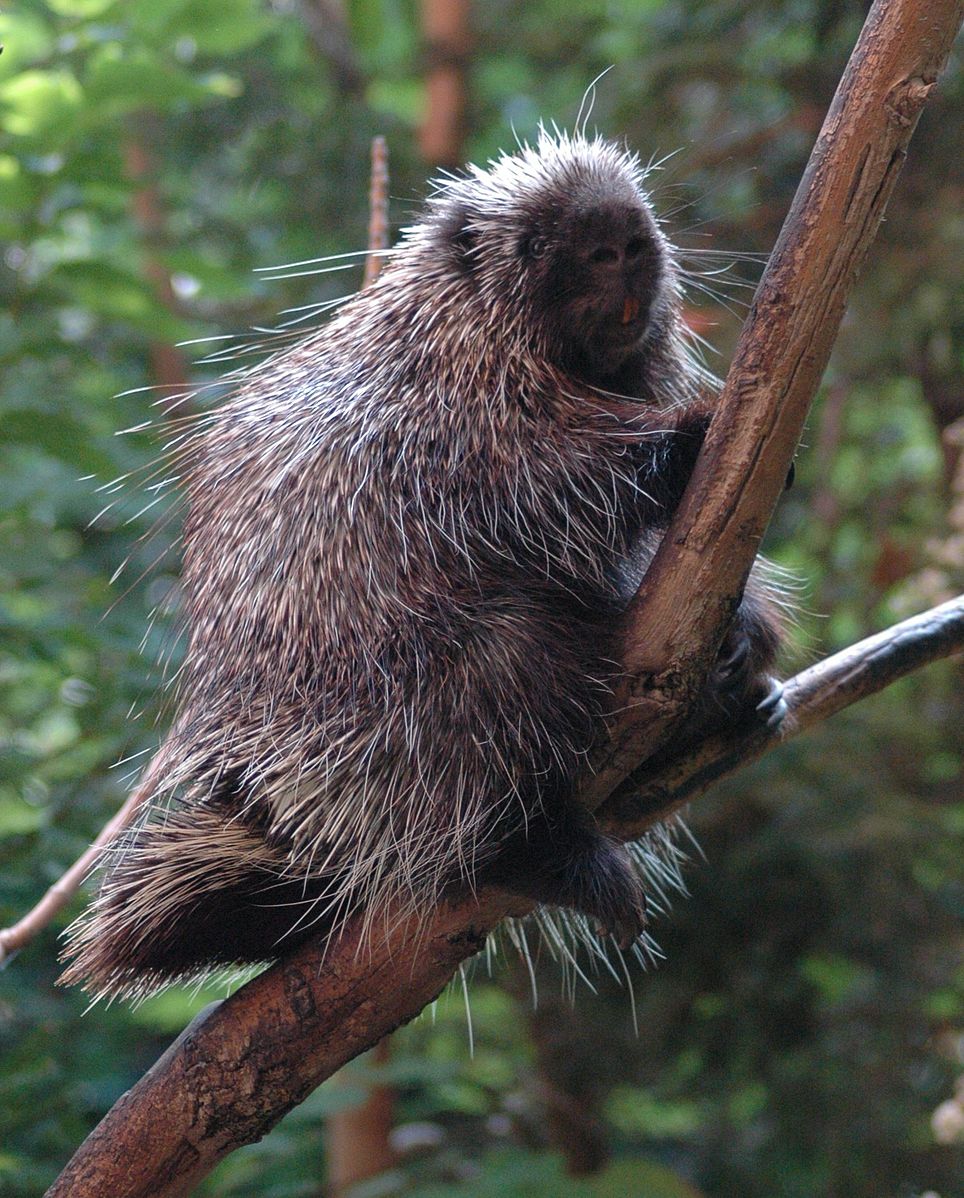

Is It Even Legal to Own a Porcupine?
The answer is that it depends. Different places have different laws, so the best starting point is to check the regulations in your neck of the woods before you even consider adopting one.
Porcupines are considered exotic pets. Though the definition of an exotic pet may vary around the world, some countries (including the U.S.) do have legal descriptions of what such an animal is.
Within the United States, almost all states (with the exception of 5) forbid or regulate the possession of exotic pets. However, some federal laws/acts can override state laws in those states – these are enforced by the US Fish and Wildlife Service.
The American Veterinary Medical Association, the U.S. Department of Agriculture, the National Animal Control Association, the American Zoo and Aquarium Association, and the CDC all discourage the private ownership of certain exotic animals1.
In some states, you can own certain exotic pets if you have a permit for them. These permits can be pricey, though, and there will likely be a restrictive set of rules that you have to follow in order to keep the animal. However, breeding them will almost always be illegal regardless of where you live. Importing a non-native animal would almost always be illegal.
Keep in mind that even if you live in a state or jurisdiction that allows you to keep a porcupine as a pet, that doesn’t mean that your landlord or homeowner’s insurance will be so accommodating. There are often strict rules against exotic animal ownership in both cases.

The Ethics of Owning a Porcupine
There are several ethical dilemmas that you should seriously consider prior to adopting a porcupine (or any other wild animal).
Pet Trafficking
In most parts of the world, there are at least some rules and regulations that prohibit the importation, sale, breeding, and possession of wild animals. Despite this, the illegal pet trade business (also known as pet trafficking) is still flourishing, generating anywhere from $7 to $23 billion USD each year 2.
The overwhelming majority of animals caught for this trade experience tremendous amounts of stress, and many don’t survive the trip to their destination countries. As such, though you might be very well-intentioned in your goals of caring for a porcupine not native to your region, you may still inadvertently be supporting an industry that thrives on the demand for exotic animals and does tremendous harm to the welfare of the many animals they capture on a regular basis.
It is important to note that despite there being laws against pet trafficking or the possession of some animal parts, the industry is nonetheless still thriving. For example, the United States has both signed CITES during its creation as well as created its own national laws against the import and sale of elephant ivory, but as of 2008, it was found to be the second largest importer of it3.
Porcupine quills are often used for decorative purposes, which may raise similar concerns if people continue to encourage their import or illegal transport across borders.
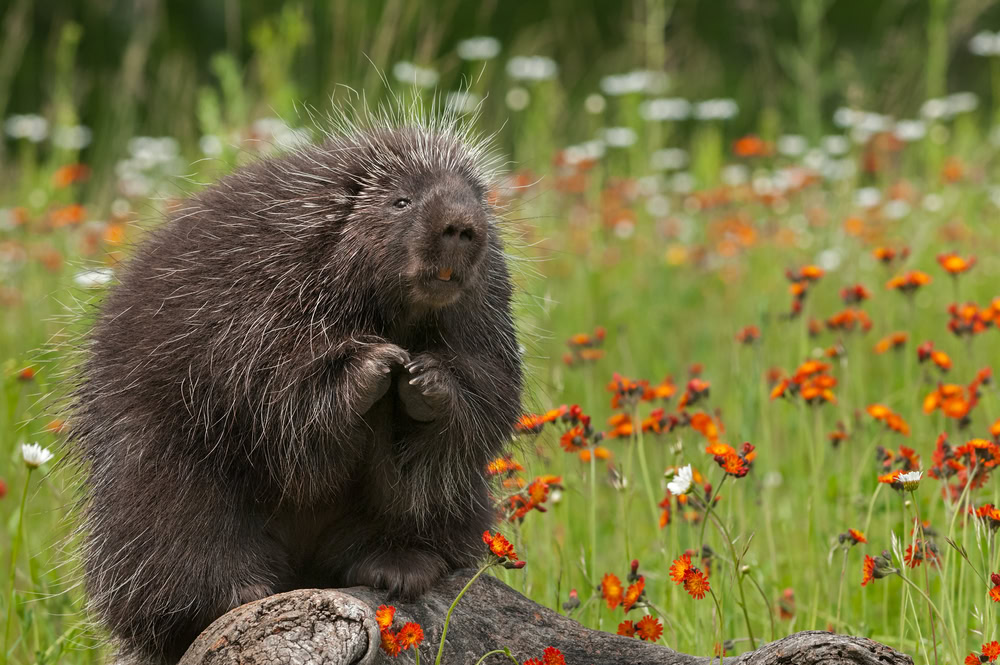
Environmental Impact
Pet trafficking also removes individuals from the wild, which in turn disrupts the balance of the ecosystems. This impact is significant and is unfortunately worsened by the fact that most people are unaware of where their animals originally come from.
Social media has influenced the increase of exotic animals being traded. Many videos online depict exotic animals being kept as pets, influencing more people to consider adopting exotic pets. However, these videos are mostly distorted and do not acknowledge the several negative side effects that come with owning an exotic pet4.
Health Costs & Implications
Veterinary care for exotic pets (including porcupines) can be extremely expensive. Not only that, it might be difficult to find a veterinarian who specializes in the care of porcupines as well.
In addition to the costs of veterinary care, there are also health risks associated with adopting an exotic pet. Zoonotic disease is known to occur in a small number of exotic pets, including porcupines5. This means that pet porcupines may infect humans who come into close contact with them. This would put you and the people around you at risk.

Husbandry Challenges
The husbandry challenges for any exotic pet are considerable, and porcupines are no exception. Porcupines are nocturnal and are difficult to restrain, transport, or capture for inspection (due to their quills). They have highly specialized herbivorous diets and cannot eat the produce found in grocery stores that we eat on a regular basis.
In addition, the New World Porcupines are adept climbers and can easily escape over a fence or climb up a tree. It is also necessary to provide them with climbing surfaces in their enclosures, though – meaning the cost of owning these pets is incredibly expensive.

The Quilling Risk
If you own a porcupine and insist on handling them, then there’s a good chance that you may get quilled. Getting quilled is extremely painful, but as long as the quills aren’t in places like your eyes, nose, or mouth, it’s unlikely to be seriously life-threatening.
The most important thing that you should do is resist the urge to pull the quills out yourself. Go to your doctor and let them handle it instead. They’ll likely give you a local anesthetic, which will be sorely needed. Then, they’ll most likely cut the quill to release the pressure inside, causing the barbs to soften and making them easier to remove.
At that point, it’s a matter of grabbing the quill(s) with fingers or pliers and slowly working them out. Even with the anesthetic, this is likely to be painful, so you’ll be glad to have someone else doing it for you. Also, doctors can ensure that the wound is clean, as infection is one of the biggest health risks involved with getting quilled.
Porcupine quills are a considerable risk for other pets as well, especially dogs. If your pet gets quilled by a porcupine, you should not attempt to remove them yourself. Instead, you should take your pet to a veterinarian for treatment (much like how you would take yourself to a doctor if you were quilled).

Is a Porcupine the Right Pet for You?
Porcupines are certainly unorthodox pets, but that doesn’t make them bad pets. Theoretically, they can be wonderfully interesting companions for the right kind of person.
However, therein lies the catch. There are far too many ethical, logistical, health, financial, and legal considerations that make very few people the “right kind of person” to adopt and properly care for a porcupine. The reality is that for the overwhelming majority of us, a porcupine is likely not a great pet.
This doesn’t mean that porcupines aren’t great animals. Indeed, there are many ways we can help wildlife and contribute to the welfare of all exotic animals without owning them. A good starting point is realizing that in most cases, we might be inadvertently fueling an industry that does tremendous damage to wildlife if we choose to impulsively adopt a porcupine. As such, perhaps holding off on an impulse decision might indeed be the best course of action in most circumstances!
Featured Image Credit: analogicus, Pixabay
- https://www.unh.edu/unhtoday/news/release/2019/09/23/unh-lab-finds-often-fatal-fungal-disease-new-englands-wild-porcupines#:~:text=The%20newly%20discovered%20fungal%20disease,caused%20by%20contact%20with%20porcupines.
- https://www.wildlifeconservationtrust.org/forced-to-pay-the-ultimate-price-for-the-pet-trade/
- https://web.archive.org/web/20080507065846/http://news.nationalgeographic.com/news/2008/05/080505-us-ivory.html
- https://www.awf.org/news/world-wildlife-day-highlights-severity-wildlife-crime
- https://www.nbcnews.com/id/wbna15919624
